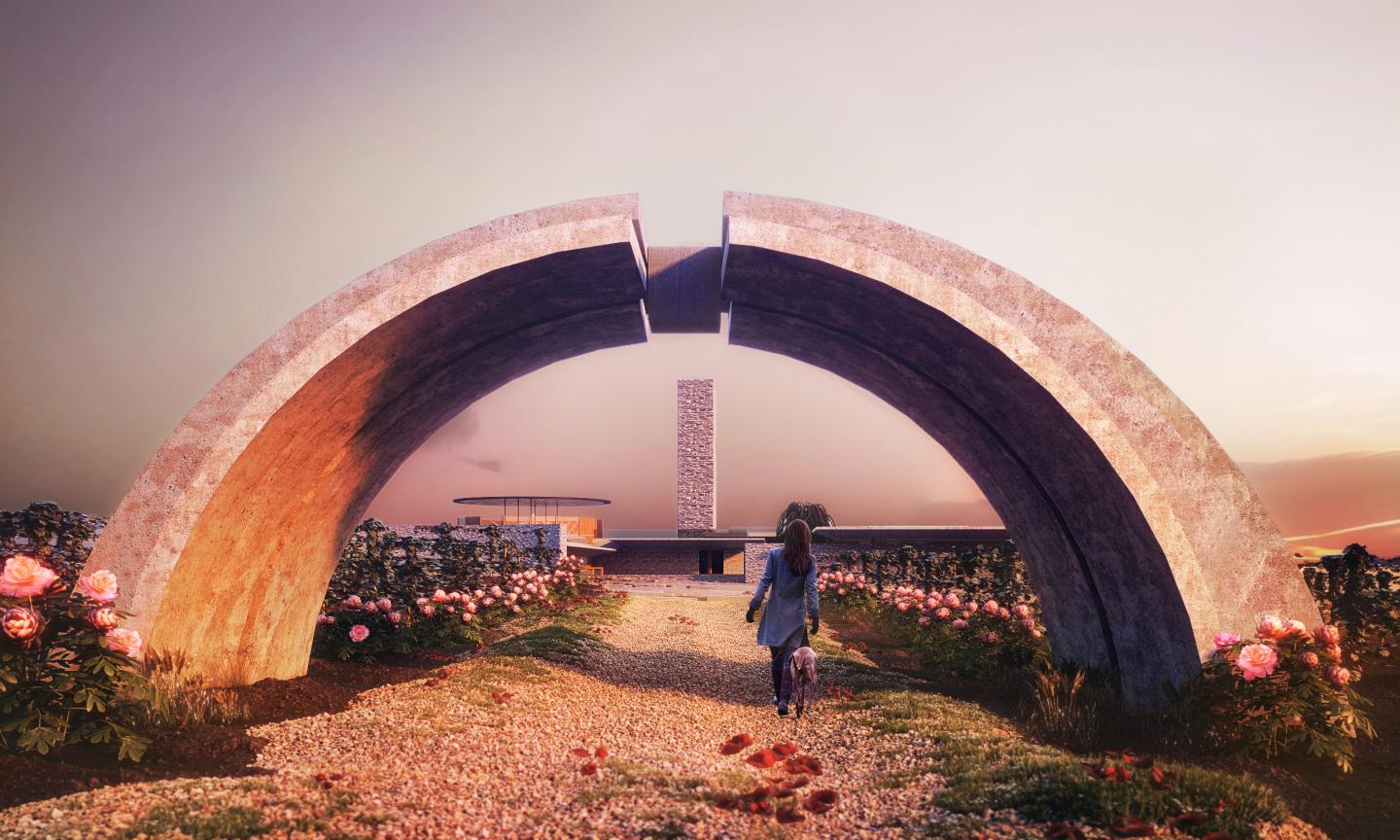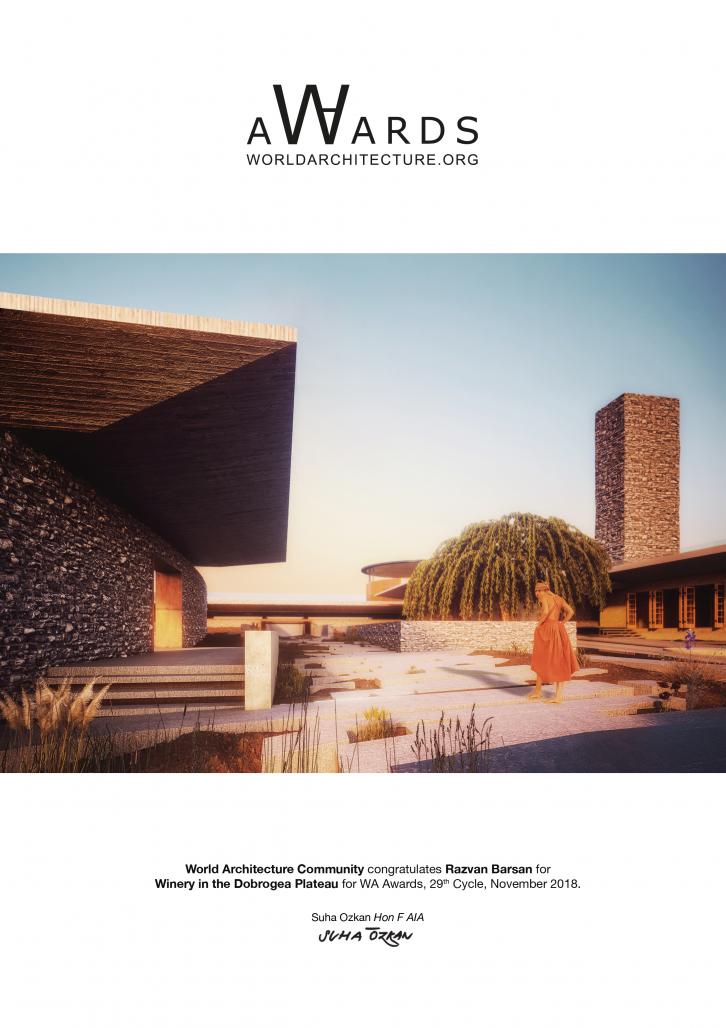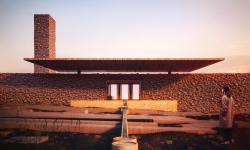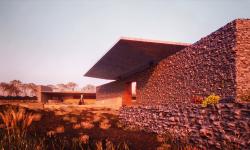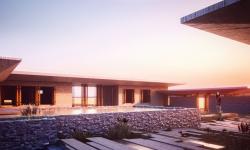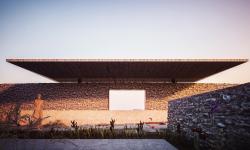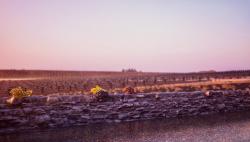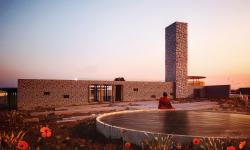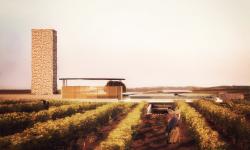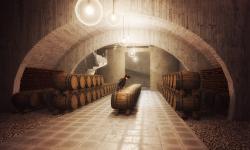The project is located in the heart of Dobrogea, in Pestera, a place where eye is used to the flat or easy rolling grounds of the highland, and the heights reconcile with the energy of the landscape. ▪ The legacy of the ancient architecture of Dobrogea, dictated an architectural intervention drawing its roots and inspiration from basic house-fortress prototypes, archetypal forms relating to the origins of primitive architecture. Having the quiet emptiness of a village, where silence becomes an architectural tool, it evokes the intimacies and social functionalism of the traditional dobrogean village. ▪ Placed in the middle of a grape vine culture, producing biodynamic wine, the interior spaces are pushed to the sides forming a courtyard. The colours and the complexity and symbolism of form explored, come together in a composition of rural elements imagining a microcosmic rural scape in a single building. ▪ The shaded courtyard provides shelter, the pools modulate the structure through reflection, light and freshness, while the stone and pigmented concrete echo the colours of the dry earth in which the building sits low, like fragments of an ancient fortress. The juxtaposition of water and building creates a mesmeric atmosphere, defining the building's character, reflecting the light and darkness that is emanated from its structure. Curved stone walls are theatrically placed, receiving and guiding with their tectonic language, acting like screens, passageways and platonic solids, giving a constant sensation of depth and layering. Using a restrained collection of forms, the theatrical effect is achieved by the density and intensity of the composition. Different heights and a constant play of scale are used to blur the boundaries between foreground and background, giving a sense of longing, while the space between, outlines an intricate network of pavements and courtyards. Breaks and formal interventions open up a hierarchy of glimpses towards the constructed and out to the natural landscape. ▪ The calm of this composition is broken by the high tower, standing out from the distance evoking megalithic times by resembling a menhir, uniting the ground with the sky, becoming the bounding architectural element. This symbolic gesture follows the words of Imre Mekovecz, that architecture must aim “to unite the earth and the heavens” attempting to work along the natural surroundings rather than triumph over them. ▪ Light and silence play key roles, embraced by form, materials, textures and dark shadows that come alive; a love of contrasts, material and immaterial, light and shadow, mass and void. The elements come together forming an organic entity reacting as a body, the legacy of a great civilization lost in the silence, dust and winds of Dobrogea . ▪ There is a time to be bold, but here, this is a time to be humble, sensitive to the voice of the land, discovering the architecture that the site itself seeks, bound to place, landscape, native country, man.
2015
0000
The winey is designed on three levels, an underground level for the production and storage of biodynamic wine, a ground floor and an upper floor for the reception area and exhibition spaces, as well as several booking units for the visitors.
Company : Razvan Barsan + Partners
Team : arch. Razvan Barsan, arch, Dana Ioana Tudor
WINERY IN THE DOBROGEA PLATEAU by Razvan Barsan in Romania won the WA Award Cycle 29. Please find below the WA Award poster for this project.
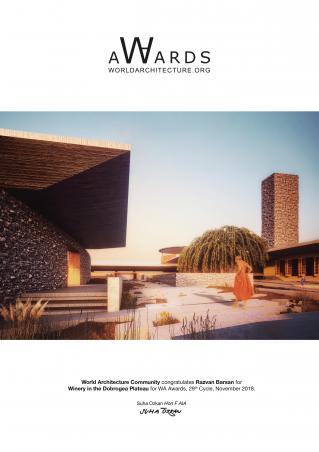
Downloaded 12 times.
